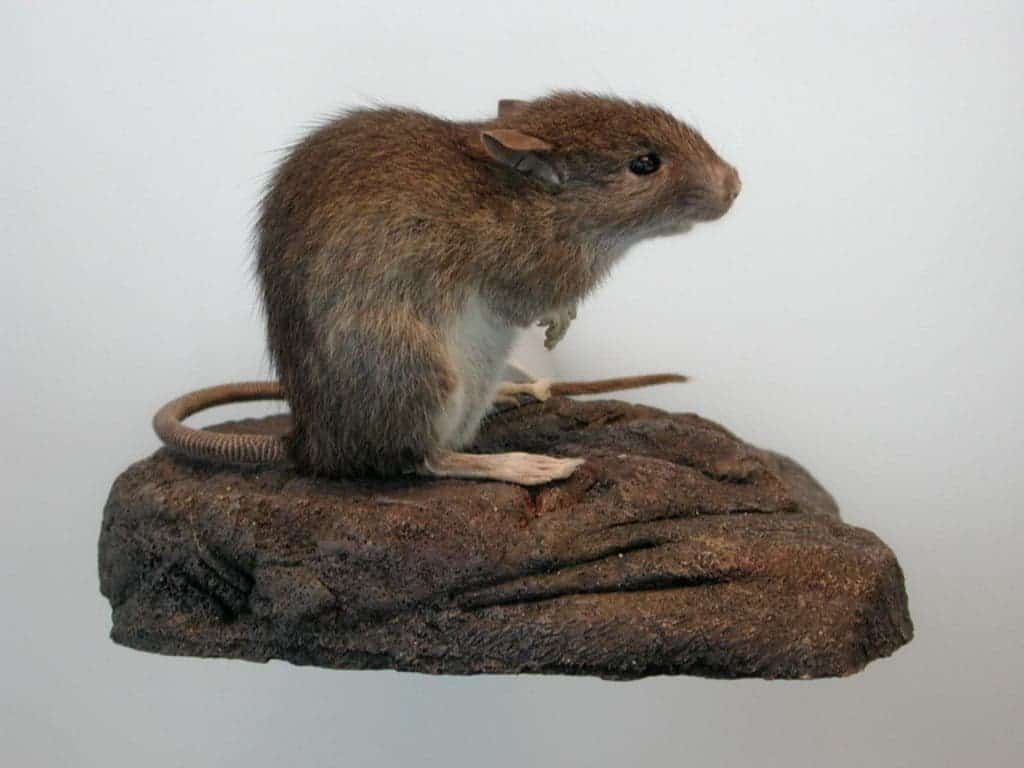Rats are remarkably adaptable creatures, but there’s one thing they’re really not good at: vomiting.
Vomiting can be gross, but it’s also an essential survival reflex that’s saved countless mammal lives. Many mammals can do it, but mice and rats can’t vomit. Surprisingly, the reason why rats don’t vomit is still being researched. It could be because of anatomical constraints (their abdominal muscles and the esophagus could restrict vomiting) or because rats lack key neural circuits. Here’s why this unpleasant topic is so important.
How animals vomit
A rat don’t burp or experience heartburn. They don’t vomit. In fact, it seems like rats have little to any reflexes that could save them from poisons, bad drugs, motion sickness, radiation or hearing Donald Trump talk on television.
That seems like quite an evolutionary disadvantage. But what is vomiting, and why are rats unable to do it?
Vomiting, or emesis, is the reflexive act of ejecting stomach contents forcefully through the mouth by coordinated muscular contractions. The ability to vomit is a critical, life-saving feature shared by many animals, and there’s an interesting biological story behind it.
The process starts with an unpleasant feeling called nausea (rats can also feel this). This is the body’s first signal that something isn’t right. Nausea is often triggered when the brain’s “vomiting center” (located in an area known as the medulla oblongata) receives signals of potential harm. These signals can come from various sources: the stomach, other parts of the brain, or even the inner ear (which is why some people get motion sickness).
Following the nausea is the actual act of vomiting, which occurs in two stages. The first stage is called the “retching” phase. During retching, the stomach’s strong muscular walls contract, but the upper part of the stomach and the lower part of the esophagus remain closed. This creates pressure inside the stomach.
In the second stage, or the “expulsion” phase, several things happen almost simultaneously. The stomach muscles contract forcefully, the lower esophageal sphincter (the muscular ring at the top of the stomach) opens, and the diaphragm and abdominal muscles also contract. This combination of actions propels the stomach contents up and out of the body, resulting in vomit.
Vomiting is distinct from regurgitation. Unlike regurgitation which is a passive, effortless expulsion of the stomach’s content, vomiting is an active reflex that involves complex muscle coordination.
Rats can regurgitate, but they can’t vomit.
Rats can’t vomit

Rats lack gut reflexes. For starters, this means they have trouble swallowing food. At times, a rat might seem like it’s choking, straining intently by pulling the chin down toward the throat and flatting the ears. But even when this happens, rats are still able to breathe and true choking is very rare. Sometimes, a rat will expel some of the swallowed food, but that’s not vomiting.
Rats can’t vomit because of a powerful and effective gastroesophageal barrier, research shows.
Firstly, the rat’s esophagus, or food pipe, and stomach have an unusually tight muscle band called the ‘lower esophageal sphincter’. This sphincter, acting as a barrier, makes it virtually impossible for food to flow back up into the esophagus. In humans and other vomiting animals, this sphincter can relax to allow the backward flow of stomach contents.
The rats’ digestive system sets up a barrier. This barrier consists of an organ called the crural sling, the esophageal sphincter, and the intra-abdominal esophagus. Researchers found that the pressure at the two ends of this barrier is greater than the pressure found in the thorax during any phase of the breathing cycle. This pressure makes it virtually impossible for rats to reflux. More specifically, rats are unable to vomit because they can not open the crural sling at the right time.
But some researchers argued that this doesn’t tell the whole story. In fact, it could be the brain wiring connecting these muscles that prevent the rats from ratting. So secondly, rats can’t vomit because they lack the neural wiring required to coordinate the muscles involved in vomiting mentioned earlier.
How rats manage non-vomiting
Rats are scavengers by nature. They eat from a wide range of sources, often from places that other animals would avoid. This exposes them to a variety of potentially harmful substances. So, wouldn’t it be beneficial for them to have a vomiting mechanism to expel toxins?
Rats may lack the ability to vomit (an integral part of many species’ defense mechanisms against toxins) but they’ve developed new ways to defend themselves.
The first thing that rats did was strengthen their first line of defense: smell. Researchers note that rats have a very keen sense of smell and taste and will easily avoid foods that might cause a vomiting response in other species. Some experts speculate that vomiting has become redundant and lost over time because rats seem to avoid dangers at the hand of toxins so well.
Rats have a highly developed ‘area postrema‘, an area in the brain that’s responsible for detecting toxins in the blood. Compared to many other animals, rats react to a smaller concentration of toxins. This sensitivity allows them to stop eating something harmful before consuming a lethal dose.
So rats developed a hyper-sensitive food avoidance system to compensate for the inability to vomit. It’s not clear at the moment which came first. But that’s not all they did.
Also, rats have a unique behavior called ‘pica’. When they ingest something potentially harmful, they’ll eat indigestible materials like clay or litter, which can absorb some toxins and help move them safely through the digestive system. When rats feel nauseouedited s, they start eating things like clay, dirt, hardwood bedding, all sorts of materials they wouldn’t consider ingesting in normal conditions. These non-nutritive substances may help dilute the toxin’s effect, so pica can be thought of as part of the rat’s second line of defense.
Curiosuly enough, some human communities also engage in pica practice. When researchers went to Madagascar to study 760 participants from the Makira Protected Area, they found 63 percent of adult males engaged in pica and amylophagy.
Evolutionary conundrums
Rat toxin avoidance isn’t foolproof. In fact, this makes them vulnerable to humans. This is essentially why rat poison is one of the main methods used to get rid of rats. Additionally, at times, a rat will become intoxicated and experience nausea.
Rats are often used in laboratory studies because of their genetic and physiological similarities to humans. However, their inability to vomit requires careful consideration when designing experiments, especially those involving the ingestion of substances.
In the grand scheme of life, the rat’s inability to vomit paints a picture of how specialized and intricate evolution can be. This surprising adaption to their scavenging lifestyle is supported by a suite of other adaptations like heightened toxin detection and pica behavior. But the rat isn’t the only creature who’s not good at vomiting. Other common animals that can’t vomit include rabbits, horses, guinea pigs or the Japanese quail. So, next time you throw up — consider yourself blessed.



